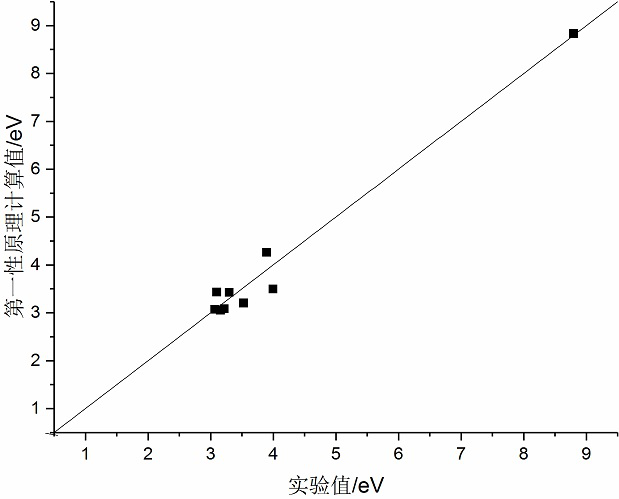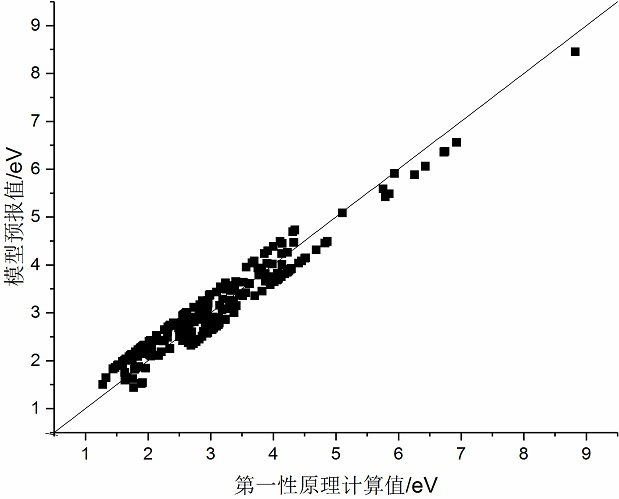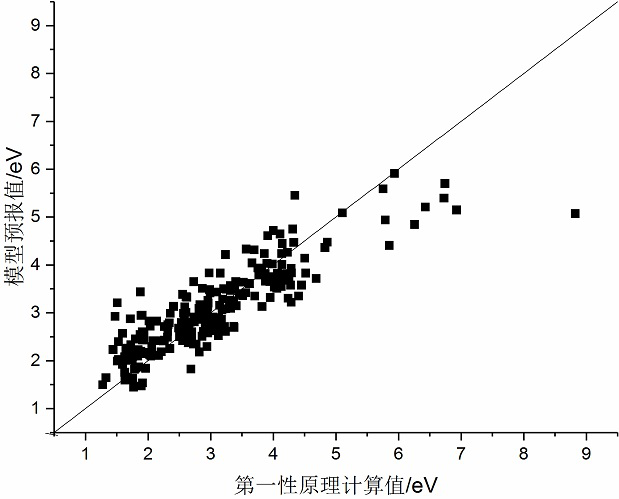A fast method for predicting the forbidden band width of polymers
A technology of forbidden band width and polymer, applied in the field of rapid prediction of the forbidden band width of polymers, can solve the problems of high test cost and low accuracy, and achieve the effects of convenient calculation, simple model and simple forbidden band width.
- Summary
- Abstract
- Description
- Claims
- Application Information
AI Technical Summary
Problems solved by technology
Method used
Image
Examples
Embodiment 1
[0088] Example 1: The modeling results of the quantitative prediction model of polymer forbidden band width based on 228 first principles combined with support vector machines, such as figure 2 shown.
[0089] The regression modeling of 228 polymer sample data was carried out by using the support vector machine regression algorithm, and the quantitative prediction model of the support vector machine regression of the polymer forbidden band width was established. The coefficient of determination between the predicted value of the polymer band gap model and the first-principles calculated value is 0.9352.
Embodiment 2
[0090] Example 2: The leave-one-out internal cross-validation results of the quantitative prediction model of polymer forbidden band width based on 228 first principles combined with support vector machines, such as image 3 shown.
[0091] The leave-one-out method is used to carry out the internal cross-validation of the SVM quantitative prediction model of the polymer forbidden band width established by the 228 sample data. The coefficient of determination is 0.759.
Embodiment 3
[0092] Example 3: The independent test set prediction results of the quantitative prediction model of the polymer band gap based on 228 first principles combined with support vector machines, such as Figure 4 shown.
[0093] The 56 samples in the independent test set were predicted by using the support vector machine quantitative prediction model of the polymer forbidden band width, and good results were obtained. The coefficient of determination between the model predicted value and the first-principles calculated value of the polymer band gap is 0.8503.
PUM
 Login to View More
Login to View More Abstract
Description
Claims
Application Information
 Login to View More
Login to View More - R&D
- Intellectual Property
- Life Sciences
- Materials
- Tech Scout
- Unparalleled Data Quality
- Higher Quality Content
- 60% Fewer Hallucinations
Browse by: Latest US Patents, China's latest patents, Technical Efficacy Thesaurus, Application Domain, Technology Topic, Popular Technical Reports.
© 2025 PatSnap. All rights reserved.Legal|Privacy policy|Modern Slavery Act Transparency Statement|Sitemap|About US| Contact US: help@patsnap.com



